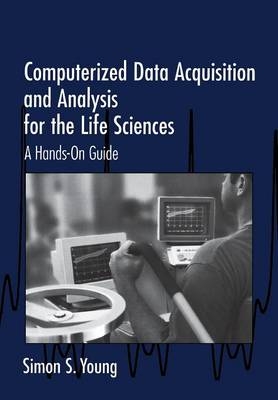
Computerized Data Acquisition and Analysis for the Life Sciences
A Hands-on Guide
Seiten
2001
Cambridge University Press (Verlag)
978-0-521-56570-7 (ISBN)
Cambridge University Press (Verlag)
978-0-521-56570-7 (ISBN)
This book is written for the non-engineer involved in computerized data acquisition. It is an indispensable guide to setting up these systems and obtaining useful information from them. Aimed at life sciences researchers, it will also be valuable to anyone interested in learning to use data acquisition systems. Illustrations and worked examples accompany the text.
Computerized data acquisition systems are often the principle method of recording experimental results. This book takes the reader step-by-step through the process of data acquisition and analysis, explaining how to set up the systems and then obtain useful information from the data recorded. In an easy-to-read style, it guides researchers through the basics of data acquisition systems, explains the important underlying concepts, and gives numerous examples of how to analyze the recorded information. While aimed at researchers in the life sciences, the topics covered are general and will be valuable to anyone interested in learning to use data acquisition systems. The principles can be applied to the collection of data from respiratory apparatus to behavioral science experiments, and a host of other situations. Many illustrations and worked examples accompany the text, and the mathematics are kept simple. This book is an invaluable tool for the non-engineer who is collecting and analyzing experimental data using data acquisition systems.
Computerized data acquisition systems are often the principle method of recording experimental results. This book takes the reader step-by-step through the process of data acquisition and analysis, explaining how to set up the systems and then obtain useful information from the data recorded. In an easy-to-read style, it guides researchers through the basics of data acquisition systems, explains the important underlying concepts, and gives numerous examples of how to analyze the recorded information. While aimed at researchers in the life sciences, the topics covered are general and will be valuable to anyone interested in learning to use data acquisition systems. The principles can be applied to the collection of data from respiratory apparatus to behavioral science experiments, and a host of other situations. Many illustrations and worked examples accompany the text, and the mathematics are kept simple. This book is an invaluable tool for the non-engineer who is collecting and analyzing experimental data using data acquisition systems.
Preface; 1. The bare essentials; 2. How a data acquisition system works; 3. Important concepts; 4. Connecting to the real world with transducers; 5. Data manipulation; 6. Examples; Appendix; Notes; References; Index.
| Erscheint lt. Verlag | 29.1.2001 |
|---|---|
| Zusatzinfo | 9 Tables, unspecified; 2 Halftones, unspecified; 172 Line drawings, unspecified |
| Verlagsort | Cambridge |
| Sprache | englisch |
| Maße | 170 x 244 mm |
| Gewicht | 402 g |
| Themenwelt | Medizin / Pharmazie ► Physiotherapie / Ergotherapie ► Orthopädie |
| Studium ► 1. Studienabschnitt (Vorklinik) ► Physiologie | |
| Naturwissenschaften ► Biologie | |
| Technik ► Medizintechnik | |
| ISBN-10 | 0-521-56570-7 / 0521565707 |
| ISBN-13 | 978-0-521-56570-7 / 9780521565707 |
| Zustand | Neuware |
| Informationen gemäß Produktsicherheitsverordnung (GPSR) | |
| Haben Sie eine Frage zum Produkt? |
Mehr entdecken
aus dem Bereich
aus dem Bereich


